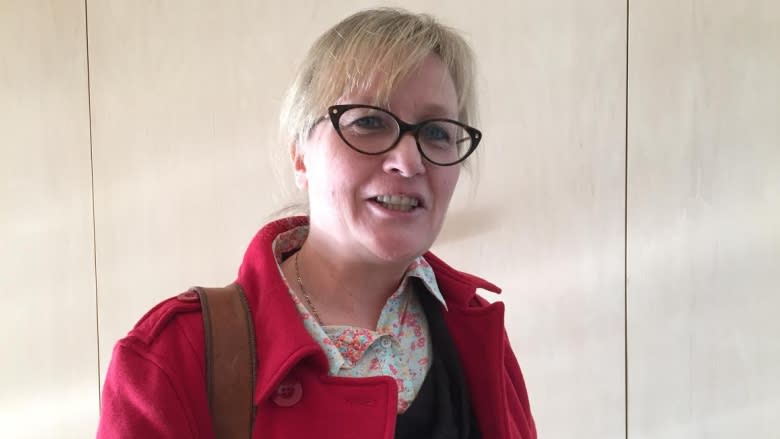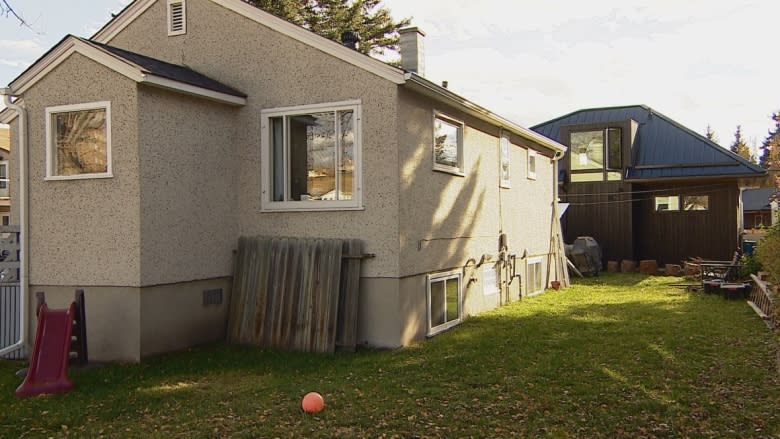'Pork chop' lots could be the future of infill in Edmonton, city committee told
An Edmonton architect wants the city to consider adding "pork chop" lots as a way to increase the amount of infill housing in the city.
The lots bear a passing resemblance to a pork chop, explains Sherri Shorten, who made a presentation to the city's urban planning committee on Wednesday.
"It's basically a front to back lot split instead of splitting it down the middle, but you give the front lot access to the back alley," she said. "So that little driveway or sidewalk or garage space ... is what creates that leg piece so that's what gives it that form.
"So the front lot still has front/back access and then sitting there, where there could be a rental garage suite, is now a piece of property."
Shorten said the idea is appealing to seniors who want a smaller place but don't want to leave their property or see their house torn down for a new infill.
"They could stay in the house," she said. "They could develop the back lot ... they could move into it.
"They would never have to leave their property, whereas with the skinny lot, the house is torn down, thrown into the dump. There is a need for skinny lots but it's not working for the major demographic in the mature neighbourhoods which is going to double in the next 20 years."
"Huge untapped potential"
The idea of the pork chop lot comes from Denmark.
In Canada, there are already similar lots in Toronto and Kelowna, where they're called "carriage houses."
Shorten said it's time Edmonton caught up.
"If you really think about the realities of what you're building, and think to the future what is going to evolve and what that form is going to look like in 20 years, the pork chop lot has a lot of urban design asset to it," she said. "It's a huge untapped potential. People I talk to say 'Where can I sign up?' "
Unlike other forms of infill, the pork chop lot can help create a diverse community, Shorten said.
"You create intergenerational communities because you can have families in the front, you can have seniors in the back, you can have singles in the back, you can have seniors in the front," she explained. "So you have a diverse community. That's why it makes so much sense."
Coun. Ben Henderson said he's already heard from people in his ward who are looking at how to split a lot front to back,
"I'm intrigued by the idea," said Henderson. "There may be neighbourhoods where there isn't that much extra width but there's a ton of extra depth and there's a laneway, so why not use that?"
Henderson said he likes that it allows for two different kinds of houses to be built on the same lot.
"They're more affordable than the big house that would have been built there instead," he said. "You can have a larger house and a smaller house now, which you can't really do with a split lot."
Shorten said pork chop lots can also bring new life to Edmonton's back alleys.
"The laneway lot is a smaller scale house. But what this does is it gives ownership to the back alley, which creates a street in the back alley as opposed to creating a ghetto of rental," she said.
The city is about to begin phase two of an ambitious infill program, with a goal for infills to make up 25 per cent of all new housing.
The committee recommended that the width requirement to subdivide lots in Edmonton be reduced from 7.6 metres to 7.5 metres.
That will allow the possible subdivision of thousands of more lots in the city.
Public meetings on the next phase of Edmonton's infill program will start in March.



